Mission type Satellite deployment Mission duration 1.2 minutes Launch date 28 January 1986 | Distance travelled 29 kilometres (18 mi) Apogee 295,000 m Date 28 January 1986 Crew size 7 | |
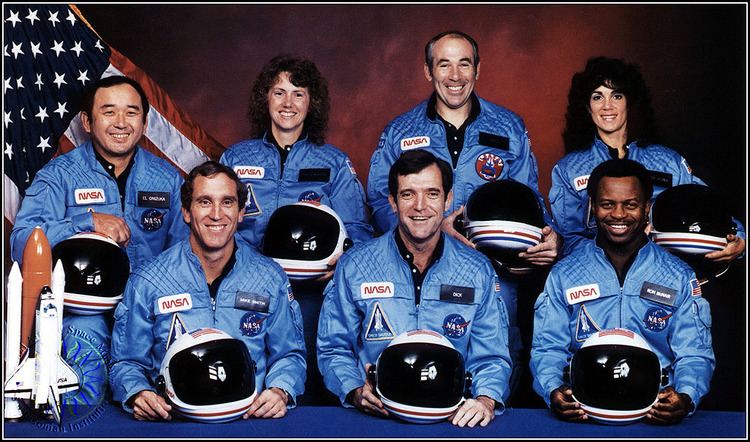 | ||
Orbits completed Failed to achieve orbit(96 planned) Launch mass 121,778 kilograms (268,475 lb) Landing mass 90,584 kilograms (199,704 lb)(planned) Members Dick Scobee, Michael J. Smith, Ellison Onizuka, Judith Resnik, Ronald McNair, Gregory Jarvis, Christa McAuliffe | ||
STS-51-L was the 25th flight of the American Space Shuttle program, and disastrous final mission of the Space Shuttle Challenger, which lifted-off from Launch Complex 39-B, at the Kennedy Space Center in Florida, on January 28, 1986. The mission ended in catastrophic failure with the destruction of Challenger, starting at 73 seconds after lift-off, and the death of all seven crew members. The Rogers Commission determined that the cause of the destruction was due to the failure of an O-ring seal on the starboard Solid Rocket Booster (SRB).
Contents
- The challenger disaster sts 51 l helicopter camera
- Planned mission
- Crew seating arrangement notes
- Ascent failure
- Crew fate
- Mission objectives
- Mission insignia
- References
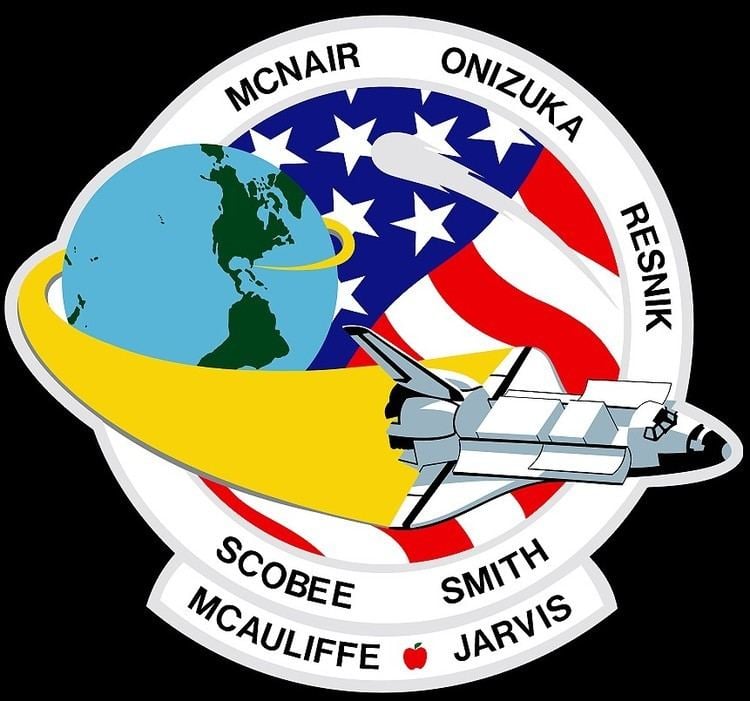
The challenger disaster sts 51 l helicopter camera
Planned mission

The tenth mission for Challenger, STS-51-L was scheduled to deploy the second in a series of Tracking and Data Relay Satellites, carry out the first flight of the Shuttle-Pointed Tool for Astronomy (SPARTAN-203) / Halley's Comet Experiment Deployable in order to observe Halley's Comet, and carry out several lessons from space as part of the Teacher in Space Project and Shuttle Student Involvement Program (SSIP). The flight marked the first American orbital mission to involve in-flight fatalities. It was also the first American human spaceflight mission to launch and fail to reach space; the first such mission in the world had been the Soviet Soyuz 18a mission, in which the two crew members had survived. Gregory Jarvis was originally scheduled to fly on the previous shuttle flight (STS-61-C), but he was reassigned to this flight and replaced by Congressman Bill Nelson.
Crew seating arrangement notes
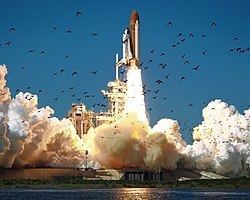
Although the crew died in the Challenger disaster, their seating assignment chart depicts what would have happened if the mission was performed as planned.
Ascent failure
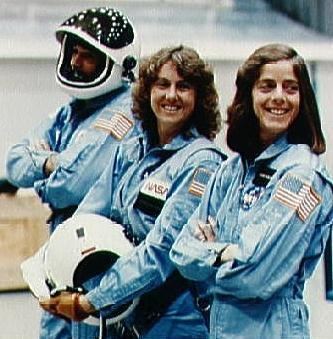
During the ascent phase, 73 seconds after liftoff, the vehicle experienced a catastrophic structural failure resulting in the loss of crew and vehicle. The Rogers Commission later determined the cause of the accident to have been the failure of the primary and secondary (backup) O-ring seals on Challenger's right Solid Rocket Booster. The failure of these seals allowed a flamethrower-like flare to impinge upon one of two aft SRB attach struts, which eventually failed, freeing the booster to pivot about its remaining attachment points. The forward part of the booster cylinder struck the external tank inter-tank area, leading to a structural failure of the ET — the core structural component of the entire stack. A rapid burning of liberated propellants ensued. With the structural "backbone" of the stack compromised and breaking up, the SRBs flew off on their own, as did the orbiter, which rapidly disintegrated due to overwhelming aerodynamic forces. The launch had been approved despite a predicted ambient temperature of 26 °F (−3 °C), well below the qualification limit of major components such as the SRBs, which had been certified for use only at temperatures above 40 °F (4 °C). Evidence found in the remnants of the crew cabin showed that several of the emergency air supplies (PEAPs) carried by the astronauts had been manually activated, suggesting that forces experienced inside the cabin during breakup of the orbiter were not inherently fatal, and that at least three crew members were alive and capable of conscious action for some period of time following vehicle breakup. "Tracking reported that the vehicle had exploded and impacted the water in an area approximately located at 28.64 degrees north, 80.28 degrees west"
Crew fate
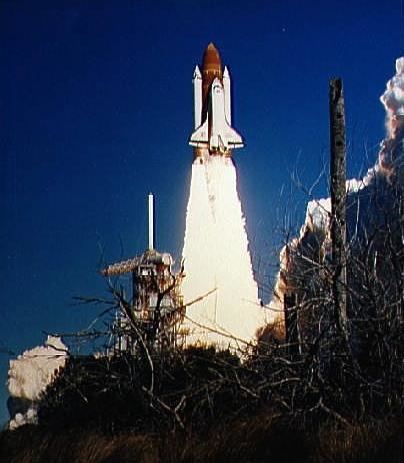
The crew perished in the vehicle breakup. Divers from the USS Preserver located what they believed to be the crew cabin on the ocean floor on March 7. A dive the following day confirmed that it was the cabin and that the remains of the crew were inside. No official investigation into the Challenger disaster has concluded for certain the cause of death of the astronauts; it is almost certain, however, that the disintegration itself did not kill the entire crew as 3 of the 4 Personal Egress Air Packs (PEAPs) that were recovered had been manually activated. This would only be done during an emergency or loss of cabin pressure (although whether cabin pressure was lost is still in debate but considered likely). PEAPs do not provide a pressurized air flow and would still have resulted in the astronauts losing consciousness within several seconds. There were media reports alleging that NASA had a tape recording of the crew panicking and on-board conversation following the disintegration during the 2 minute 45 second free fall before hitting the sea east of Florida. This was likely fabricated and no recording exists, as the crew may have been unconscious from loss of cabin pressure and the astronauts did not wear individual voice recorders. Any voice recording facility would have been without power since the breakup of the orbiter immediately separated the crew compartment from the power-generating fuel cells in the back of the vehicle. The impact of the shuttle with the sea would have killed any still surviving astronauts on board, though they may have died before the impact of other causes.
Mission objectives
Mission insignia
Dick Scobee asked Kennedy Space Center engineer Ernie Reyes to design the mission patch seen above to represent the mission of 51-L. In it, Challenger is depicted launching from Florida and soaring into space to carry out a variety of goals. Among the prescribed duties of the five astronauts and two payload specialists (represented by the seven stars of the US flag) was observation and photography of Halley's Comet, backdropped against the U.S. flag in the insignia. Surnames of the crew members encircle the scene, with the payload specialists being recognized below. The surname of the first teacher in space, Christa McAuliffe, is followed by a symbolic apple.
